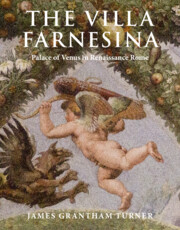Book contents
- The Villa Farnesina
- The Villa Farnesina
- Copyright page
- Contents
- Acknowledgements
- Abbreviations and Frequently Cited Works
- Introduction
- 1 ‘Antique’ Imagination and the Creation of the Villa-Palazzo
- 2 The Stanza del Fregio and Peruzzi’s First Architectural Wall-Painting
- 3 The Lost Façade-Paintings
- 4 1512 Overtures
- 5 The Second Phase, 1518–1519
- Notes
- Photograph Credits
- Index
Introduction
Published online by Cambridge University Press: 06 October 2022
- The Villa Farnesina
- The Villa Farnesina
- Copyright page
- Contents
- Acknowledgements
- Abbreviations and Frequently Cited Works
- Introduction
- 1 ‘Antique’ Imagination and the Creation of the Villa-Palazzo
- 2 The Stanza del Fregio and Peruzzi’s First Architectural Wall-Painting
- 3 The Lost Façade-Paintings
- 4 1512 Overtures
- 5 The Second Phase, 1518–1519
- Notes
- Photograph Credits
- Index
Summary
Who needs another book on the Farnesina? No secular building typifies the Italian High Renaissance better than this villa established on the bank of the Tiber by the outrageously wealthy Papal banker Agostino Chigi (1466–1520). With its innovative architecture by Baldassare Peruzzi, brilliant frescoes by Peruzzi himself, Sebastiano del Piombo, Sodoma and Raphael – culminating in the tale of Psyche designed by Raphael and painted by his talented team of artists including Giulio Romano and Giovanni da Udine – it has been thoroughly studied and documented. Already in 1512, a French diplomat called it ‘the most beautiful and rich thing I have ever seen’, anticipating Goethe’s declaration that no more beautiful works of decorative art existed. Every survey of Renaissance art and every study of those individual artists includes a passage on the Farnesina (a nickname given long after the Farnese had bought the property, more correctly known as the Villa Chigi or ‘Palazzo Agostino Chigi’). Distinguished architects record it in their sketchbooks (Fig. I.1).
- Type
- Chapter
- Information
- The Villa FarnesinaPalace of Venus in Renaissance Rome, pp. 1 - 21Publisher: Cambridge University PressPrint publication year: 2022



